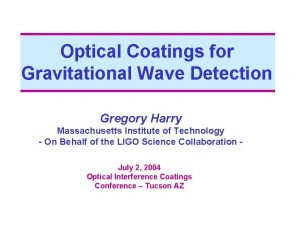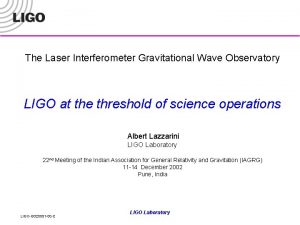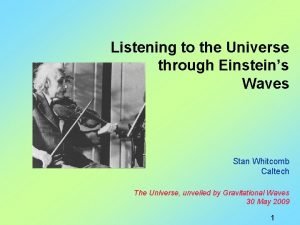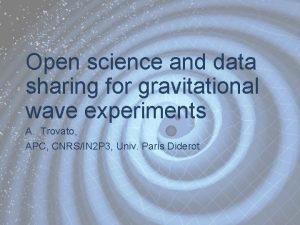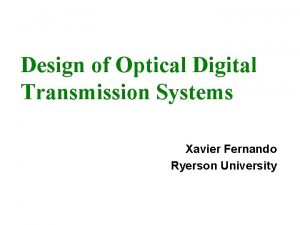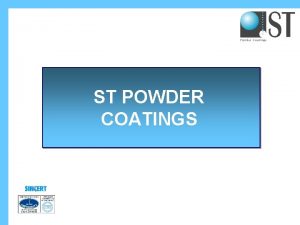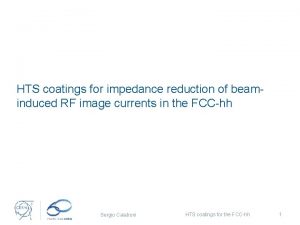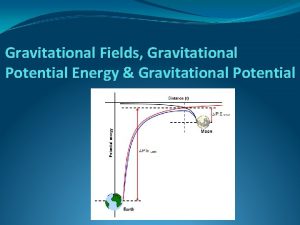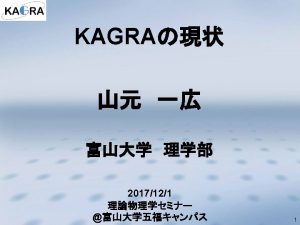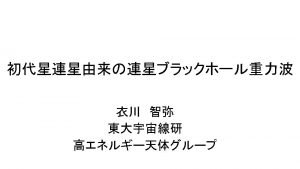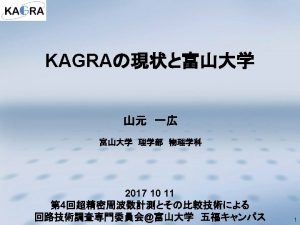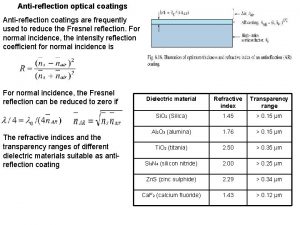Optical Coatings for Gravitational Wave Detection Gregory Harry











- Slides: 11

Optical Coatings for Gravitational Wave Detection Gregory Harry Massachusetts Institute of Technology - On Behalf of the LIGO Science Collaboration July 2, 2004 Optical Interference Coatings Conference – Tucson AZ

Gravitational Wave Detection • Gravitational waves predicted by Einstein • Accelerating masses create ripples in space-time • Need astronomical sized masses moving near speed of light to get detectable effect LIGO • Two 4 km and one 2 km long interferometers • Two sites in the US, Louisiana and Washington • Michelson interferometers with Fabry-Perot arms • Whole optical path enclosed in vacuum • Sensitive to strains around 10 -21 LIGO-G 040254 -00 -R

Interferometer Sensitivity • Measured sensitivity of initial LIGO 1/2004 • Nearing design goal • Hanford 4 km within a factor of 2 near 100 Hz • Design sensitivity of proposed Advanced LIGO • Factor of 15 in strain improvement over initial LIGO • Thermal noise from mirror substrates and coatings sets sensitivity limit LIGO-G 040254 -00 -R

Coating Thermal Noise • Fluctuation-Dissipation Theorem predicts noise from mechanical loss • Proximity of coating to readout laser means thermal noise from coatings is directly measured • Need low mechanical loss coatings while still preserving low optical loss, low scatter, reflectivity • Initial LIGO has 40 layer silica/tantala dielectric coatings optimized for low optical absorption Advanced LIGO Coating Requirements Parameter Requirement Loss Angle f 5 10 -5 Optical Absorption 0. 5 ppm Scatter 2 ppm Transmission 5 ppm Current Value 1. 5 10 -4 1 ppm 20 ppm 5. 5 ppm LIGO-G 040254 -00 -R

Coating Mechanical Loss Experiments Direct Measurement of Thermal Noise Using Prototype Interferometer • LIGO/Caltech’s Thermal Noise Interferometer • 1 cm long arm cavitites, 0. 15 mm laser spot size • Consistent with ~ 4 10 -4 coating loss angle Measurement of Coating Mechanical Loss From Modal Q Values • Test coatings deposited on silica substrates • Normal modes (2 k. Hz to 50 k. Hz) decay monitored by interferometer/birefringence sensor. • Coating loss inferred from modal Q and finite element analysis modelling of energy distribution • Can examine many different coatings fairly quickly LIGO-G 040254 -00 -R

Results Coating Mechanical Loss Layers 30 60 2 30 30 Materials Loss Angle • Loss is caused by internal friction in l/4 Si. O 2 - l/4 Ta 2 O 5 2. 7 10 -4 materials, not by interface effects -4 l/8 Si. O 2 - l/8 Ta 2 O 5 2. 7 10 • Differing layer thickness allow -4 l/4 Si. O 2 – l/4 Ta 2 O 5 2. 7 10 individual material loss angles to be -4 l/8 Si. O 2 – 3 l/8 Ta 2 O 5 3. 8 10 determined -4 3 l/8 Si. O 2 – l/8 Ta 2 O 5 1. 7 10 f. Ta 2 O 5 = 4. 6 10 -4 , 2. 8 10 -4, 2. 4 10 -4 f. Si. O 2 = 0. 2 10 -4 l/4 Si. O 2 – l/4 Ta 2 O 5 1. 8 10 -4 f. Al 2 O 3 = 0. 1 10 -4 doped with low [Ti. O 2] f. Nb 2 O 5 = 6. 6 10 -4 l/4 Si. O 2 – l/4 Ta 2 O 5 1. 6 10 -4 doped with high [Ti. O 2] Goal : fcoat = 5 10 -5 LIGO-G 040254 -00 -R

Future Plans • Continue with Ti. O 2 doped Ta 2 O 5 up to stability limit of Ti. O 2 films • Examine other dopants in Ta 2 O 5 • Examine other high index materials • Improve stoichiometry of Ta 2 O 5, correlate with optical absorption • Examine relationship between annealing and mechanical loss • Need more input and collaboration with material scientists and optical engineers LIGO-G 040254 -00 -R

Optical Coatings for Gravitational Wave Detection Gregory Harry Massachusetts Institute of Technology - On Behalf of the LIGO Science Collaboration July 2, 2004 Optical Interference Coatings Conference – Tucson AZ

Gravitational Wave Detection • Gravitational waves predicted by Einstein • Accelerating masses create ripples in space-time • Need astronomical sized masses moving near speed of light to get detectable effect LIGO • Two 4 km and one 2 km long interferometers • Two sites in the US, Louisiana and Washington • Michelson interferometers with Fabry-Perot arms • Whole optical path enclosed in vacuum • Sensitive to strains around 10 -21 9 LIGO-G 040254 -00 -R

Coating Thermal Noise • Mechanical loss causes thermal noise according to FDT • Dielectric optical coating can have high mechanical loss compared to silica substrates • Thermal noise from the mirror coatings will set the sensitivity limit in Advanced LIGO • There is not much data on internal friction in optical thin films, and not much theoretical guidance on reducing it • The coating must also meet strict optical standards, sub ppm absorption, 2 ppm scatter, 5 ppm HR transmission Proposed Advanced LIGO sensitivity LIGO-G 040254 -00 -R

Results and Plans Coating Mechanical Loss Layers 30 60 2 30 30 Materials Loss Angle • Loss is caused by internal friction in l/4 Si. O 2 - l/4 Ta 2 O 5 2. 7 10 -4 materials, not by interface effects -4 l/8 Si. O 2 - l/8 Ta 2 O 5 2. 7 10 • Differing layer thickness allow -4 l/4 Si. O 2 – l/4 Ta 2 O 5 2. 7 10 individual material loss angles to be -4 l/8 Si. O 2 – 3 l/8 Ta 2 O 5 3. 8 10 determined -4 3 l/8 Si. O 2 – l/8 Ta 2 O 5 1. 7 10 f. Ta 2 O 5 = 4. 6 10 -4 , 2. 8 10 -4, 2. 4 10 -4 f. Si. O 2 = 0. 2 10 -4 l/4 Si. O 2 – l/4 Ta 2 O 5 1. 8 10 -4 f. Al 2 O 3 = 0. 1 10 -4 doped with low [Ti. O 2] f. Nb 2 O 5 = 6. 6 10 -4 l/4 Si. O 2 – l/4 Ta 2 O 5 1. 6 10 -4 doped with high [Ti. O 2] Future Plans Need more input and collaboration with material scientists and optical engineers SMA/Virgo: further Ti. O 2 -doped Ta 2 O 5 CSIRO: improving stoichiometry in Ta 2 O 5 and effects of annealing LIGO-G 040254 -00 -R
 Gregory harry
Gregory harry Wave could hear murmurs across universe
Wave could hear murmurs across universe Gravitational wave
Gravitational wave Gravitational wave
Gravitational wave Giant gravitational wave murmurs from universe
Giant gravitational wave murmurs from universe Gravitational wave open science center
Gravitational wave open science center Coherent detection in optical communication
Coherent detection in optical communication St powder coatings
St powder coatings Hospital wall coatings
Hospital wall coatings Elegant coatings pvt ltd
Elegant coatings pvt ltd Hts coatings
Hts coatings Sherwin williams chemical coatings store
Sherwin williams chemical coatings store
